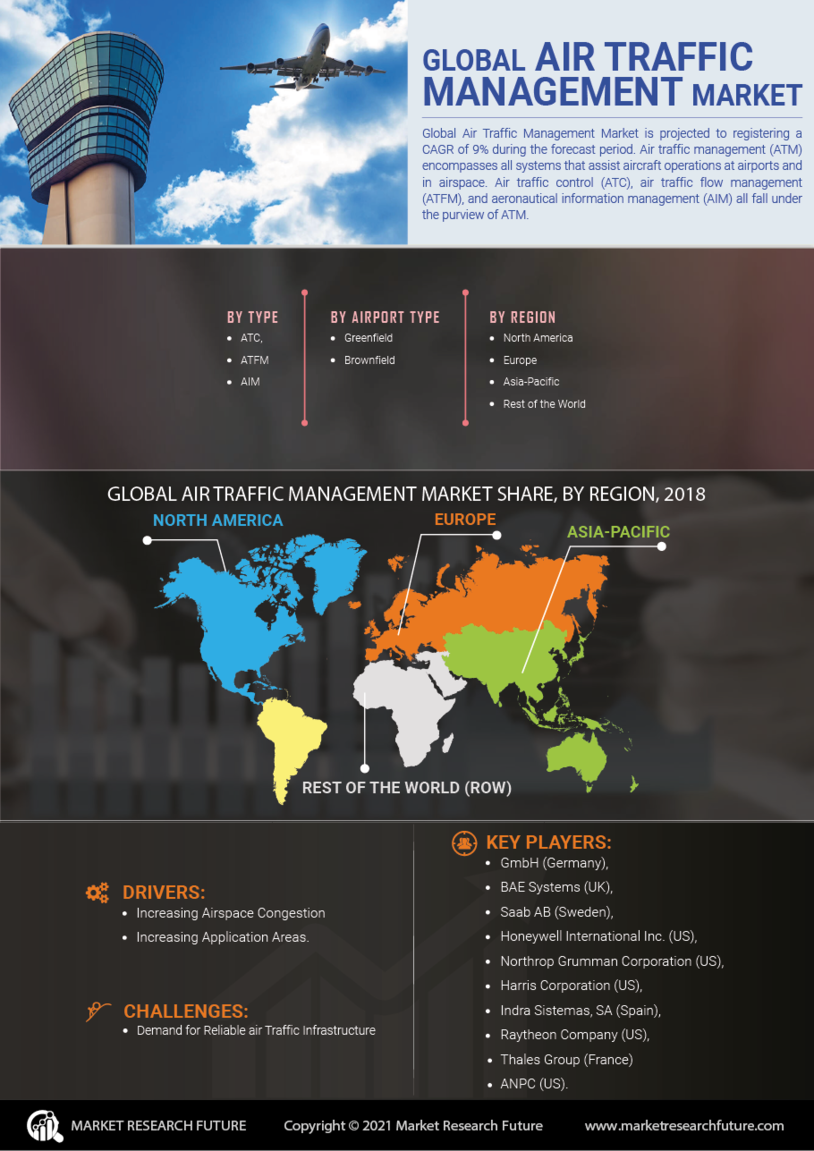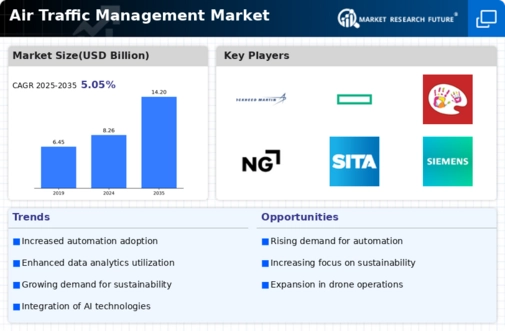The Air Traffic Management Market is characterized by rapid advancements and intense competition, driven by the increasing air travel demand and the need for efficient air traffic management systems.
This market encompasses a range of solutions, including software, hardware, and services focused on enhancing the safety, efficiency, and reliability of air travel. Competition is primarily influenced by technological innovations, regulatory requirements, and the ability of air traffic management companies to provide integrated solutions that meet the diverse needs of airports, airlines, and air navigation service providers.
Players in this market aim to leverage advanced technologies such as artificial intelligence, machine learning, and data analytics to improve operational efficiencies and enhance air traffic flow management, all while addressing environmental concerns and ensuring compliance with global regulations.
Lockheed Martin has established a significant presence in the Air Traffic Management Market through its focus on innovative airborne and ground-based systems. The company is recognized for its strengths in developing advanced technologies that enhance air traffic control capabilities and increase operational efficiency.
Lockheed Martin's expertise in systems integration positions it favorably to support complex air traffic management initiatives globally. The company's ability to collaborate with governmental agencies and provide tailored solutions that meet specific regional needs enhances its competitiveness in this market.
Furthermore, Lockheed Martin’s commitment to continuous research and development ensures its solutions remain cutting-edge, allowing it to respond effectively to evolving industry demands and regulatory changes.
Indra Sistemas holds a strong position in the Air Traffic Management Market, focusing on providing comprehensive solutions that span air traffic control systems, surveillance technology, and airport management solutions.
The company offers key products and services such as advanced air traffic control systems, integrated resource management tools, and decision-support systems that enhance the safety and efficiency of air operations globally.
Indra Sistemas is recognized for its agility in adapting to global market trends and its proactive approach in engaging in strategic mergers and acquisitions, which significantly bolster its capabilities and expand its market reach.
The company’s emphasis on innovation, as showcased through its investments in research and development, further cements its reputation as a key player in the air traffic management sector. With a strong global footprint, Indra Sistemas continues to enhance its service offerings, ensuring it remains competitive in a rapidly evolving industry landscape.


















Leave a Comment